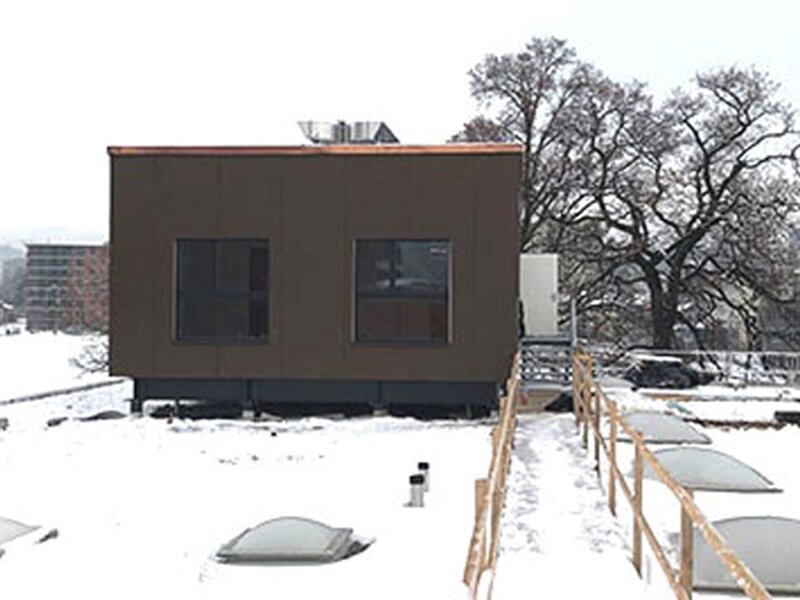Lucerne University of Applied Sciences and Arts researches the perfect house
Horw - The School of Engineering & Architecture at Lucerne University of Applied Sciences and Arts has a new building on the roof of its laboratory building. It is a research module designed to help rethink resource-saving heating, ventilation and cooling.
A new research module at the School of Engineering & Architecture at Lucerne University of Applied Sciences and Arts in Horw in the canton of Lucerne, which was built thanks to a donation, enables the simulation of various construction methods. The four-meter-high building, which was erected on a 64-square-metre footprint, is part of the Perfect House project.
It contains two research rooms and a technical room packed with building technology. As Lucerne University of Applied Sciences and Arts explains in a statement, 60 sensors on the room surfaces continuously measure heat balance and feed this into a computer model that uses the data to calculate surface temperatures. It then generates water at the right temperature in the technical room, which flows through aluminium elements on the room surfaces.
The system simulates the room conditions that result from the use of the respective materials and technologies. For resource-saving heating, ventilation and cooling, there are differences depending on whether the walls of a room are made of heavy concrete or wood, whether there are two or six people in the room, and how a heating or ventilation system behaves in a wooden or concrete building.
«In the research module we have built, we want to clarify how structural and technical measures can be optimally combined, as well as what building technology and architecture will look like in the future,» commented project manager Markus Koschenz. The findings will be transferred to a virtual model that can change the geometries of the rooms or the location of the building. «In this way, we combine the advantages of real measurement with the flexibility of the digital world.»
Hochschule Luzern Architektur & Technik

